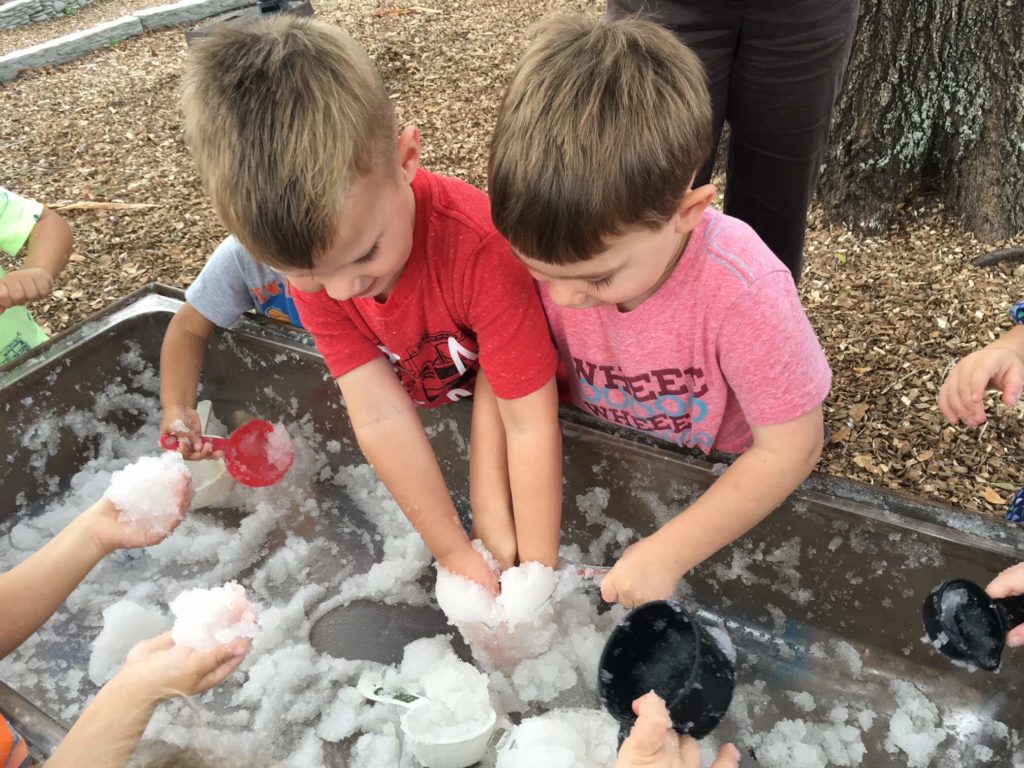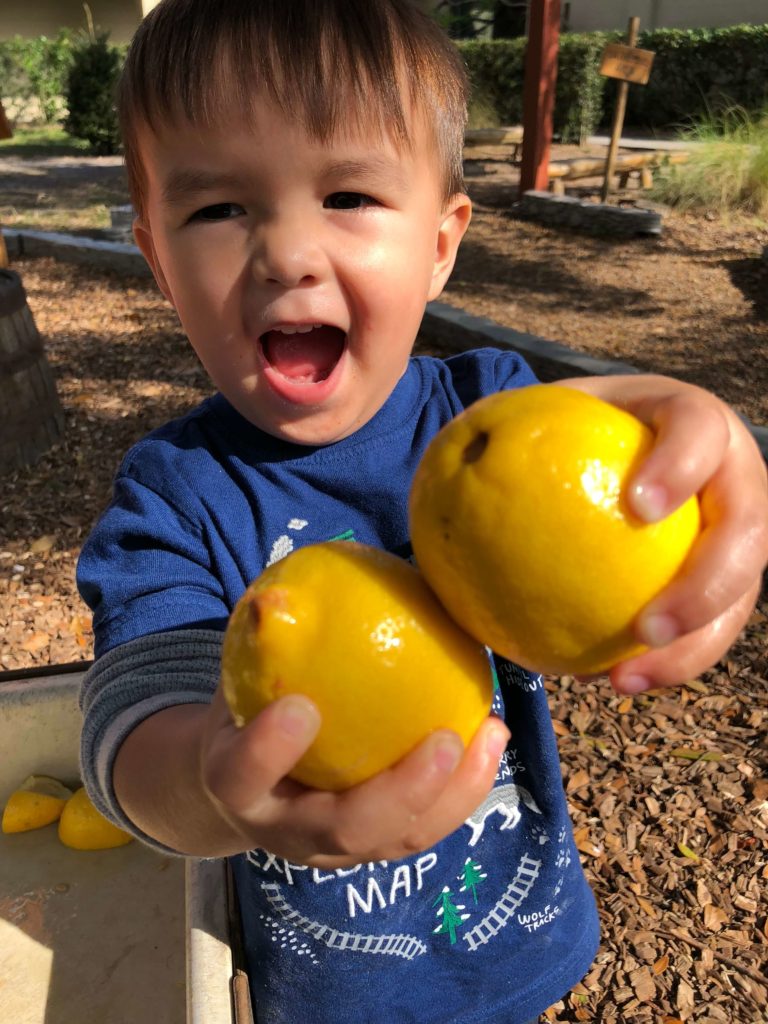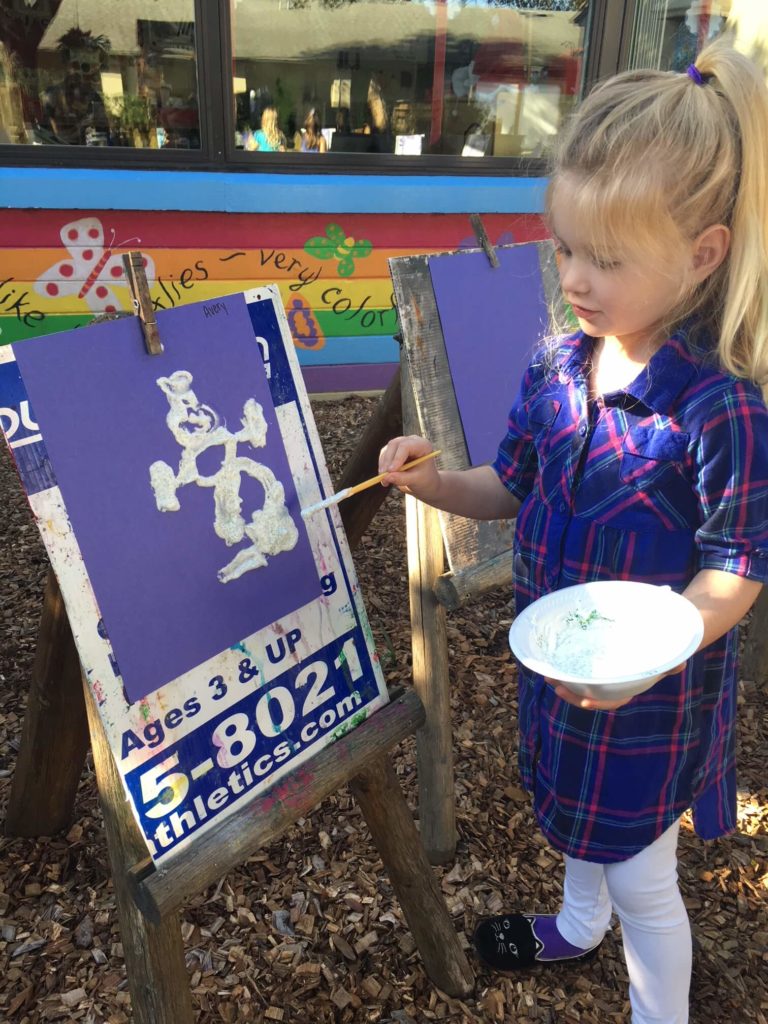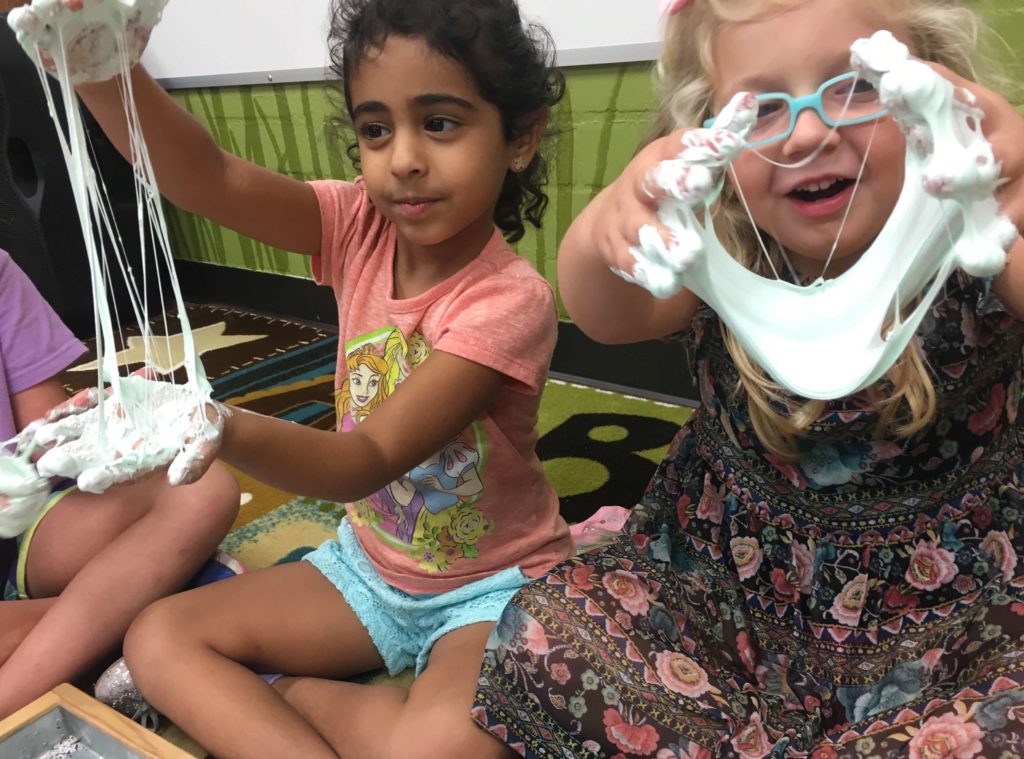
What is sensory play and why do we integrate it?
Sensory play is any type of activity that engages a child’s senses, i.e. touch, taste, smell, observation, hearing, movement and balance. This type of play is so beneficial to children because it shapes their choices, impacts their behavior and helps them make sense of the world around them. It encourages the use of scientific processes while they play and helps the brain make stronger nerve connections. It builds language skills and exposes children to new vocabulary that they wouldn’t normally get on a typical classroom day. It promotes development of gross and fine motor skills, which are large and small muscle movements, respectively. It assists in regulating internal discomfort and frustration, making sensory play relaxing to children. Lastly, children are able to learn adaptive play with others, helping with their social interactions and development. As you can see, sensory play is vital in a child’s development. By engaging their senses, children learn better and retain most information this way.

What kinds of sensory play do we engage in at St. Luke’s Preschool?
We incorporate all types of sensory play every single day! In the Outdoor Classroom, we are learning about the seasons, specifically winter. The children were able to experience what real snow would feel and look like. They got to squeeze it between their fingers and scoop/pour it with cups. This is especially important for children to be able to build positive connections with textures in a safe environment with no expectations. It was an enjoyable way to expose children to snow which is something they would only experience up north. We are also learning about citrus fruits that grow here in Florida’s winter that would not survive northern winters. These are fruits like oranges, grapefruits, lemons, and limes. We got to taste each of these fruits to determine which ones were sour and which were sweet. We also got the chance to feel, smell and compare them in the sensory bins. Lastly, we were able to use some of the fruit as a painting tool to stamp with and create a masterpiece.
In the Lab, we learn about each of our animals: Rabbit, Guinea Pig, Turtle, Hermit Crab and Tadpoles. We are able to observe their behaviors and pet our furry friends, Fluffy the bunny and Cookie the guinea pig. We also get the chance to feed them and listen to what noises they make. This is another example of a positive interaction for children who may be afraid of or have never seen certain animals before.

How can I incorporate sensory play at home?
Sensory play is not something you have to go out and spend lots of money on. You can use everyday household items to engage your children’s senses. You can make homemade slime, kinetic sand or play dough. (Recipes can easily be found online.) Bubbly explosions made from baking soda, vinegar and dish soap are always a favorite! Freeze items in water and have children pick at them in the ice. There’s scented edible finger paint, colored beans/rice, pots/pans as musical instruments, taste tests with new foods, your options are endless. By allowing your children to get messy and engage multiple senses, it gives them countless ways to develop and learn!
